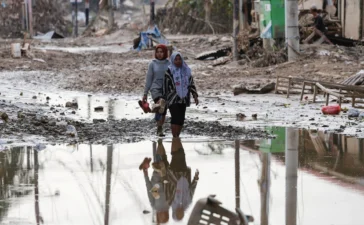Hawaii has been formally awarded $149 million to help improve access to high-speed internet service, officials said Tuesday.
The money, which was earmarked for the state last year, is coming through the Broadband Equity, Access and Deployment program. BEAD is part of the federal government’s “Internet For All” initiative to connect people in America with affordable and reliable high-speed internet service.
“This is a historic moment,” said Alan Davidson, assistant secretary of commerce, at Tuesday’s press conference. “This is our chance to make sure that we connect everybody in the state and everybody in the country with the tools that they need to succeed in the modern digital economy.”


Lt. Gov. Sylvia Luke, who has been leading Hawaii’s effort to upgrade its broadband capabilities, noted that connectivity is highly important now. She pointed to the pandemic and the recent wildfires across Hawaii, emphasizing the necessity of reliable internet service for getting information out and staying connected.
“Communication is not something that can be done without connectivity — connectivity to the internet, connectivity to your phones, connectivity to what is going on around our neighborhoods,” she said.
The funds from the BEAD program are crucial for establishing this connectivity throughout Hawaii’s islands, Luke said. She explained that the islands are largely dependent on aging infrastructure and undersea cables but with the nearly $150 million in funding, Hawaii will have the capital to change that.
A large portion of the money will go toward building new infrastructure, said Garret Yoshimi, the chief information officer at the University of Hawaii who played a major role in putting together the state’s BEAD proposal.
Yoshimi hopes that construction will begin later next year or early 2026, although the state must first go through a competitive procurement process to hire companies for the work.
Any funds left after construction will be used for support purposes, such as purchasing devices or offering training, but Davidson said that the main priority of the program is to pay for deployment.
“This is a deployment program, first and foremost,” he said. “Once the plan and the providers are in place to serve unserved homes, then there’s an opportunity to use the funding for other purposes.”














